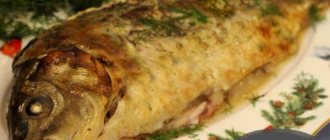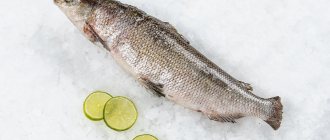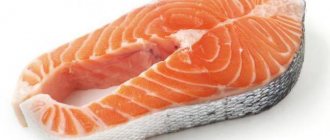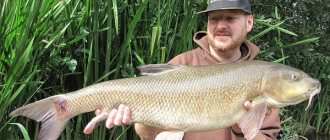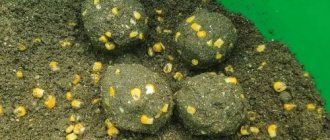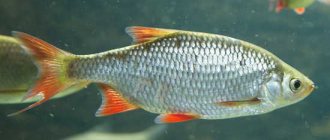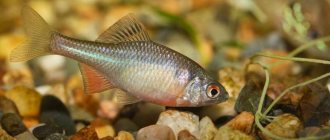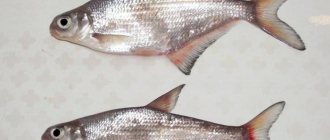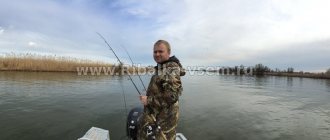Fisherman - what kind of fish?! Photo and description
The fish have silvery scales, ranging from dark silver on the back to lighter on the belly. The fins located on the lower part of the body are yellowish in color. During the spawning period, the back darkens, the scales become more shiny, and the belly and pelvic fins acquire a bright orange-red color; at this time, males develop characteristic white tubercles on the head and gill covers.
The body shape is elongated, but not too narrow, the dorsal fin is not long, but high. The anal fin is oblong, the scales are large, tightly fitting. The head is elongated with a large nose and a retractable mouth sloping downwards, which indicates the fish feeds on the bottom. A scaleless groove stretches from the head to the dorsal fin; the space from the ventral to the anal fin is also scaleless.
Reaches a maximum length of 60 centimeters and a weight of up to 3 kilograms (except for the Maly Rybets subspecies - up to 19 centimeters and up to 100 grams), usually, when fishing, individuals over 30 centimeters and heavier than 500 grams are rarely caught. Reaches sexual maturity at 4 years and lives up to 17 years.
Spawning occurs in the spring, and can cause long migrations from permanent habitats upstream and deep into rivers. The size of females and males varies slightly. It is a bottom-dwelling species and, accordingly, feeds mainly from the bottom of benthic and benthic types of food - plankton, crustaceans, insect larvae, worms, mollusks, plant foods, etc.
Biology of fish fish
During the spawning period, the male acquires a multi-colored color and changes beyond recognition. Intense, rich colors - black, dark blue, orange, yellow - make the fish look like an inhabitant of coral reefs.
- Body.
The body of the fish is slender, densely covered with scales. Usually an iridescent coating appears on it: dark blue, black or greenish, depending on the habitat of the fish. The lateral line is clearly visible: it is slightly curved downwards, running from the back of the head to the caudal fin. The scales are easily separated from the skin.
- Head and mouth.
The head of the fish is small and pointed. There is a growth above the mouth opening.
- Fins.
The caudal fin with a notch resembles the Latin letter V. The outer ray of the upper lobe of the fin is the color of the back, that is, dark, often with a dark blue tinge. The color of the fin is uniform, predominantly gray with blue, dark blue and steel patina. This fin allows the fish to travel even 600 km upstream of the river.
- Eyes.
The eyes of the fish are very beautiful and large compared to the head. The black pupil is surrounded by a yellow iris, which in the male may become orange in color during the mating season.
In the language of ichthyologists, the fisherman belongs to the group of anadromous semi-anadromous fish, generatively freshwater, rheophilic, trophically marine. The main food is the larvae of Chironomidae, the additional food is crustaceans Gammaridae and Asellus.
For the angler, this means that the fish appear in the rivers cyclically, do not fall asleep during the winter, search for food, and can be caught during the winter months. It feeds on meat, and it is precisely such baits that attract it; does not disdain pasta with the taste of bloodworms or fish; he is also interested in grains of corn, wheat and barley.
During the mating season, the male is easy to distinguish from the female; males are brightly colored, swim in whole groups behind females and encourage them to lay eggs. The female can lay 30,000 to 100,000 eggs in portions; spawning continues until early July. The current carries the eggs outside the spawning area - they end up in the space between the pebbles and stones. After a week, young fish appear. During the first week they do not leave the shelter and avoid daylight. Gradually they master large waters and begin to feed on plant plankton until they grow up and gain strength. Fish of the sedentary population grow much slower than migrating Baltic ones.
A sedentary fisherman reaches the size of its migrating relative 2-3 years later.
- The world of fishermen
One-year-old fish fry swim in the sea, covering enormous distances - up to 600 km. The fisherman lives in salt water for about 5 years and again takes a long journey to the place where he was born. During a difficult journey against the current, it can cover an average of about 6 km per day.
Adult fish return to the sea immediately after spawning, although the return journey is not as massive as the upstream spawning journey. Many adult fish remain at or near the spawning grounds. Nevertheless, most of the fish still roll into the sea. Here he again gathers in large flocks.
Fish trapped in rivers and lakes formed local populations. This is how several separate flocks appeared, which differ slightly from each other in gastronomic preferences and timing of the start of spawning. Fish live near the bottom because that's where they mainly feed.
In a small river, it has to look for food everywhere: on stone and fascine fortifications of the bank, piles, supports - wherever colonies of small organisms live, which are the main food of the fish. The fisher has adapted well to searching for food in a thin layer of silt on a hard bottom. It has a lower mouth, which is designed in the form of a retractable stigma, reminiscent of the stigma of a bream.
Fish maintain the same habits in the Baltic Sea, in bays adjacent to river mouths, or in lakes connected to the sea. It can be caught near shallows, in ports, at the mouths of rivers and canals, but always near the bottom.
Typically, fishermen are more active at night - perhaps this is due to the noisy behavior of people on the shore or the desire to avoid encounters with sharp-eyed predators. In many rivers it appears next to schools of other fish: roach, podfish, bream.
Many anglers catch fish regularly; heavy catches can create a false picture of the species' well-being. In fact, the fishfish is still struggling to survive: today, populations in some regions are largely shaped by humans through numerous stockings using artificially bred fry.
Rybec is a small and delicate fish; To see it as bravely fighting prey, the angler must look at it from a sporting point of view. Those who are interested in fishing should use a sensitive fishing rod and learn to fish delicately with a retrieve or with a pickerel.
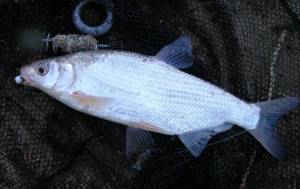
Fishing for fish
Where is the fishfish found and widespread?
There are four main subspecies of Fish, distinguished by habitats and slight differences in appearance:
- small Black Sea fisherman (lives mainly within the basins of the Black and Azov seas);
- Caspian fisherman (habitat of the Caspian Sea basin);
- small rybets (Black Sea basin);
- damp (common in the basins of the North and Baltic seas).
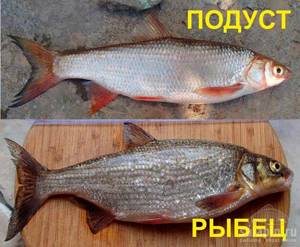
It is found in water bodies of central and eastern Europe, in Russia it is widespread in the South-Western and Southern regions, and is also often found in the river basins of the Caspian, Baltic and North Seas. Migratory populations are usually somewhat larger than freshwater ones and live in estuaries and estuaries where the salt level in the water is not too high. Read also: Fishing on the Don
Fishing for fish
Information about the peculiarities of the lifestyle and, accordingly, the fishing of this beautiful and noble fish is extremely meager. Moreover, those that exist date back to the distant past. Therefore, those who suffer are unlikely to be able to gain knowledge from open sources. I find the explanation for this mainly in this. that the fisherman has become an endangered species in many regions.
For example, in Belarus it was listed in the Red Book back in 1981. Nevertheless, in the basins of the Black, Caspian and Baltic Seas, the fisherman still lives in considerable numbers, so it is possible to organize a rendezvous with it. We can say that in this regard I was lucky, because I live on the banks of one of the fastest rivers of the Western European plain - the Neman, in which there is no shortage of fishermen. Therefore, the fish inevitably misses the mark in the catches, and in the Baltic states it is not even one of the species prohibited from catching.

Rybets (or another name syrt) belongs to the family of carp fish. Moreover, it is the most valuable of this community, due to the tenderness and taste of its meat. However, no one is engaged in widespread breeding of this fish because the element of the fisherman is the river. Strong currents, fresh water, pebbly and sandy beds, riffles - these are her native elements. True, sometimes fishermen appear in flowing lakes, but this is rather an exception to the rule.
At one time it was believed that the fisherman was a migratory fish, entering rivers from the estuarine areas into the sea to spawn. However, observations show that as hydraulic structures were built on the rivers, it turned into a freshwater fish that did not go to the sea. Another thing is that in the spring the fishermen migrate to the upper reaches of the river, still moving over impressive distances. Information regarding the size of the fish is contradictory. Some say it reaches a couple of kilograms. I know that in Lithuania fish up to 1 kg are caught en masse. I didn’t come across fish over 700g, but that didn’t make them any less desirable. In addition, the fisherman is a worthy opponent who fiercely resists when fished. so it's a lot of fun.
Read: Choosing the right leashes: carp, feeder leashes
On such a large river as the Neman, fishermen grouped in schools stick to the fairway and deep channel holes.
Catching small fish on the main stream from the shore is problematic even for experienced river fishermen. You will have to use very heavy weights, up to 300 grams. But still, the fishing sector will be unreasonably wide, the current will not allow placing the feeder at one point, which will negatively affect the fishing performance. Another thing is a boat that allows you to use even a float rod, but today we will not talk about it, but about the feeder.
This is the equipment I prefer. Both the above circumstances and the tendency of the fisher to stay near the bottom, where he looks for food, testify in favor of the feeder.
If possible, I put a plastic quivertip on the feeder, because it picks up bites more sensitively. I have never caught a fish that would hook itself and sit on the hook, waiting to be taken out. Often a fish bite looks like a couple of short nods of the tip, then its trembling and finally a few more nods of the tip. The cutting should be done already at the first stage.
In the fall, the fish bite more timidly, so even if the tip deviates from the norm at the slightest, you should hook it. When installing equipment, any options are acceptable, but the anti-twist tube provides good results in catching small fish. But most often I prefer the classics - paternoster. Leashes should definitely be made from thin fishing line with a diameter of 0.1-0.1 mm. Thicker ones will negatively affect the number of bites. I classify the fish as a rather cautious fish that requires a delicate approach.
Read: Baits and attachments for catching bream on a feeder
I use hooks no larger than No. 14 made of the thinnest but strongest wire possible. But the shape of the bend is not of fundamental importance. On one of my fishing trips in late autumn, the fish did not make itself felt until I replaced the fishing line with a diameter of 0.12 mm with 0.1 mm. increasing the length of the leash from 50 to 70 cm and did not tie hook No. 18 instead of No. 14. After this, the bite was investigated immediately and turned out to be effective. The fisherman was hooked with a miniature hook at the very edge of the lip. After the caught individual, his relatives followed at an interval of about 10 minutes. At the same time, a similar situation was observed by my friend, who was fishing ten meters away from me.
You can incubate up to three larvae on a hook. When the bite is cautious, I reduce their number. Moreover, I invariably cover the sting of the hooks with the body of one of the larvae so that it does not slip, I pierce the larva first right through at the head, and then reintroduce the sting into the body. I do the same with bloodworms, catching one of them with a ring by the head and tail, and sometimes with a “stocking”.
Like many carp fish, the fisherman is active after dusk. This is good news, since during the day its bite is inevitably interrupted by other fish that dominate the river. Fish bites are more confident at night. The top of the feeder literally shakes, and it is impossible to miss the attack of the bait by this fish.
Read: Fishing with a spring
On fast rivers I choose coarse mixtures for bait. To catch small fish, I add only clay to them in a 1:1 ratio to hold the nutrient mixture inside the feeder. For 2.5 kg of bait (the volume of one package) I add a kilogram of boiled millet. The more large heavy nutrient particles there are, the more effectively the bait works in strong currents. As the feeder fills, I add a few maggots to the mixture.
Considering that the fisherman’s diet consists of bottom dwellers (leeches, mollusks, etc.). I use maggots as bait in the summer, and bloodworms in the fall. In the latter case, there is a high probability that other fish will quickly eat the bait, but in the fall the situation changes: the fish migrate, and the bloodworm is less susceptible to attacks by unwanted fish and remains on the hook unharmed longer. And the roach fish and some other fish feed quite actively until the end of November. So you can be intentional about catching small fish from the bottom.
But I share the opinions of my predecessors, who argued that fishermen are caught only in the morning and evening. Even in the summer heat, she is able to peck all day long. And sometimes just when other fish pause. The dependence of the fisher's bite on changes in weather seems to me to be similar to other fish. But just before and after the rain I came across it.
Considering that the enchantress in our rivers has not yet disappeared, I believe that she deserves close attention to her person. Therefore, I recommend that everyone who knows the true sense of fishing and wants to expand the list of their fishing trophies pay attention to it.
Fishing on a feeder
How and what is fish caught?
Fish are caught (depending on the region where they live) usually with the onset of warm weather, when the fish enter smaller areas of the reservoir or ascend the river to spawn. Before spawning, the fish begins to eat, and at this time it bites best.
The place for fishing should be with running, fresh water. The best time of day for fishing is early morning and late afternoon. In order to have greater freedom in choosing a place for fishing (especially in the autumn when the fish go to deeper places), it is advisable to have a boat.
They are caught mainly on bottom (feeders) and float (usually in wiring) gear; ring-type rigs have also proven themselves well. Since Rybets is a cautious fish, many fishermen recommend using long (50 to 90 centimeters) leashes so that the fish does not feel the resistance of the sinkers when taking the bait.
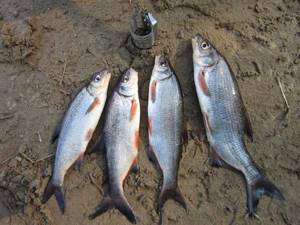
For complementary feeding, you can use metal feeders with small spikes (so that they do not get carried away by the current). The complementary food must contain pieces of the fraction that is used as bait (chopped bloodworms, worms, maggots, etc.).
As bait, they usually use food of animal origin, such as bloodworms, maggots, worms and shellfish, but in the summer a good catch is also possible with vegetable baits (corn, peas, pearl barley, dough, semolina, etc.). When fishing, you need to take into account the bottom and near-bottom nature of the feeding; accordingly, the bait should be either at the bottom or not high from it.
Other names
The fish is distributed over such a vast territory that it has more than one or two nicknames. They depend on the habitat and linguistic characteristics of the peoples inhabiting these regions. This fish has the name vybets in the south of Russia and in the main part of Ukraine.
Scar
Reduction of many sounds is characteristic of the inhabitants of Kuban. This is where the official name is simplified to "tripe" most often. But due to culinary confusion with tripe, it is used more by fishermen, less often by housewives.
Raw (cheese)
The most popular middle name is raw. This “colder” expression is used in the North-West of the Russian Federation, with such variations as syrtina or sirtinka, to become damp. In Polish it sounds a little different - tsirta ile tserta, sometimes - tsirfka.
Limba
Many sources talk about the absence of raw material in Siberian rivers and the Volga, but this is rather misleading. Similar waterfowl (with some adjustment for extreme cold conditions) live in both Lena and Ob. Siberian salmon has different names; limba is a Yakut variant of pronunciation.
Vimba
This is easiest to explain. Fish or cheese belongs to the carp species, and in Latin it sounds simple - Vimba Vimba. Transliteration from the ancient language and cutting off the repetition led to the name Vimba. It can be heard more often on the Baltic and nearby rivers.
These are not all duplicates of the name of the fish. She is also called along the Vistula River - the enchantress, in the Pskov lands - podust, and in some places in the Baltic states and Poland - shcheberka and even mare.
In some cities of Ukraine and Belarus it is called mullet. The popular Odessa song about scows and Kostya the Sailor, performed by Mark Bernes, is written about her.
Nutritional value of fish

It is fatty, tender, very juicy and tasty, it can be fried, baked, boiled fish soup, but it is especially valued when dried and smoked. Due to the content of fluoride, vitamin PP, essential amino acids and unsaturated fats, it can be recommended in the diet of everyone, but it will be especially useful for patients with osteoporosis, rickets, atherosclerosis, hypertension and cardiovascular diseases. Read also: The benefits of seaweed in your daily diet
What to fish with
Catching fish under any of the names is not so easy. During the spawning period, it makes long forced marches upstream of rivers and goes into the depths.
It always feeds from the bottom, preferring crustaceans, larvae, mud, worms, plankton and some mollusks. The diet in shallow and deep waters differs, so the population goes to spawn for more refined food.
Immediately before the time of active reproduction, the raw fish reserves strength and simply gorges itself in the shallow waters that warm after winter. This period of the year is especially favorable for fishing (private or industrial).
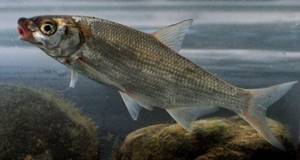
Fishing masters reveal several secrets of a successful trip for raw fish. To do this you need:
- find a point with fresh running water;
- feed future prey from a metal spiked feeder (they are more resistant to currents) with a mixture with the addition of the main bait;
- prepare gear – donks, hooks with floats, “rings” – with a good supply of fishing line length (at least half a meter) in order to put the bait on the bottom, lull vigilance, and prevent you from feeling the tension of the gear ahead of time;
- stock up on animal feed suitable for these places (molluscs, maggots, bloodworms, insects, worms);
- catch early in the morning or at the very beginning of the evening.
For fishing, you can also use vegetarian bait: fresh green peas, corn grains, pearl barley, semolina or dough. But you can count on success only in warm weather, which means in the southern regions. The Caspian species is often caught on a plant hook. The further north you fish (starting from Latvia and Pskov), the more “heavy” the food for bait should be.
Photo of fish fish
Groundbait and bait for small fish in autumn on the Don
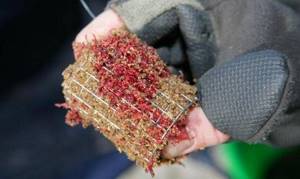
The taste preferences of fishermen change not only depending on the water temperature in the fall, but also on the fishing location. When within the city limits of Rostov-on-Don it responds only to shrimp, near Novocherkassk it is quite successfully caught using maggots. So, baits for fisherman:
- Maggot;
- Cancer cervix;
- Shrimp;
- Worm;
- “Sandwich” maggot and bloodworms;
- Scented foam balls.
The best bait for catching autumn Don fish is considered to be raw crayfish meat. The neck is cleared of the shell and placed in a container of water, which is placed in the refrigerator.
In order for the prepared necks to acquire the desired consistency, they are kept in a jar of salted cold water, so they will become harder and will stick well to the hook. Alternatively, use a rubber band for pellets to secure the bait.
Regardless of the time of year, maggots work great. The larvae are planted in a bunch. The shrimp is covered with maggot so that it holds better; it is included in the sandwich. The sandwich uses live mosquito larvae and artificial bloodworms. Sometimes artificial ones perform better than natural ones. You have to try everything.
To plant crayfish, you need to get it; it’s much easier to buy shrimp. Increasingly, it is replacing the traditional nozzle. There is no need to cook the shrimp; they are already completely ready to be hooked. Before fishing, it is advisable to defrost them in advance, drain the released water and hold it for a while at room temperature so that the meat dries out a little.
Ready-made feeder baits from some manufacturers include mixtures designed specifically for catching small fish, for example, Mironov. The degree of moisture depends on the strength of the current. As a rule, in the second half of autumn, the water level in the Don drops, the current becomes stronger, and the bait is made more viscous.
